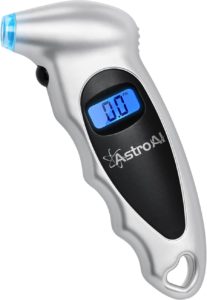The Audi A8 has an innovative tire pressure monitoring system (TPMS). It helps drivers maintain the right tire pressure to stay safe on the road. The Audi A8 TPMS is indirect, making it different from most systems because it does not use individual sensors in each tire. Instead, it uses the car’s anti-lock braking system (ABS). This system tracks tire pressure changes by analyzing wheel rotation speeds. The TPMS can find changes that indicate altered tire pressure. If it detects a problem, it activates a dashboard warning light. The tire pressure light is a yellow exclamation point that lets the driver know that there is a potential issue with the tire pressure.
How Does the Audi A8 TPMS Work?
Audi A8 Indirect TPMS: Helps drivers maintain proper tire pressure.
Relies on ABS: Utilizes the car’s anti-lock braking system and wheel speed sensors to determine tire pressure.
No Individual Sensors: Monitors tire pressure indirectly, without sensors in each tire.
Analyzes Wheel Speed: Tracks rotational speed of each wheel, affected by changes in tire pressure using wheel speed sensor data.
Calculates Differences: Processes wheel speed data to identify potential tire pressure issues. Compares current tire pressure to tire pressure specification.
Warning Light: Triggers dashboard warning light when significant discrepancies are detected in tire pressure.
Audi A8 Tire Pressure Light Reset Procedure
Before following this reset procedure, make sure your tires are at recommended pressures. Find the correct PSI on the inside of the driver-side door jamb.
Turn the ignition key to the “On” position or have the vehicle running.
Select Home and then Vehicle
Select Settings & Service
Select Tire Pressure Monitor
Select “Store Tire Pressure” and then “Yes, Store Now”
Car will confirm with “The current tire pressure has been stored”
Audi recommends driving the vehicle for at least 20 minutes at speeds above 12 mph to allow the system to recalibrate fully.
When to Reset Audi A8 Tire Pressure Monitoring System?
Tire Pressure Adjustment: Whenever you adjust tire pressure, reset the tire pressure light to maintain accurate pressure monitoring.
Tire Rotation: After rotating tires, reset tire pressure monitor so that new tire positions are represented in the TPMS.
Tire Replacement: Anytime you replace one or more tires, be sure to reset the TPMS.
Seasonal Tire Change: When switching between winter and summer tires, reset the tire pressure monitor to account for the different tire types.
TPMS Malfunction Indicator: If the TPMS malfunction indicator light turns on, resetting the system may resolve the issue after diagnosing and repairing any detected problems.
Wheel Alignment or Balancing: After performing wheel alignment or balancing services, reset the TPMS to ensure accurate tire pressure monitoring.
ABS Sensor Replacement: Since the indirect TPMS relies on data from the ABS, it’s important to reset the system after replacing a wheel speed sensor.
TPMS Software Update: If the vehicle’s tire pressure monitoring system software has been updated, follow the reset procedure so that it’s compatible with the latest software version.
Vehicle Battery Replacement: If you replace the Audi A8’s battery or jump start a dead battery, reset the TPMS to re-establish proper communication between the system and the vehicle’s onboard computer.
What Are Common Causes for TPMS Lights to Turn On?
Low Tire Pressure: Natural pressure loss or temperature fluctuations causing a drop in tire pressure.
Tire Puncture or Leak: Rapid loss of tire pressure due to a nail or screw type of object or road debris. Audi A8’s have high performance wheels and low profile tires which are highly susceptible for rim cracks causing tire pressure loss.
Mismatched Tire Sizes: Different tire sizes or types leading to discrepancies in wheel rotation speeds. Always use OEM size wheels and tires to prevent this issue.
Uneven Tire Wear: Tires with uneven wear affecting wheel speed and causing false TPMS warnings.
Tire Rotation or Replacement: TPMS not getting reset after tire rotations or replacements, causing false warnings.
Wheel Alignment Issues: Poor wheel alignment can cause variations in tire rotation speeds.
Malfunctioning ABS Sensor: Faulty wheel speed sensors affecting indirect TPMS accuracy and triggering a warning light.
TPMS Software Issues: Problems with TPMS software or firmware causing false warnings.
Tire Pressure Variation: Significant differences in pressure between tires leading to TPMS warning light illumination.
Vehicle Weight Overload: If a vehicle carries too much weight it puts extra stress on the tires. This excess load can alter the tire’s rolling diameter, which then impacts the wheel’s rotational speed. Consequently the system could misinterpret these speed changes as a possible tire pressure problem and activate the warning light.
What Happens to Underinflated Tires?
Underinflated tires can cause numerous problems that impact vehicle safety, performance, and fuel efficiency. Driving with underinflated tires leads to uneven wear, shortening tire life and potentially causing handling and braking issues. Increased rolling resistance in underinflated tires puts extra stress on the engine. This will cause higher fuel consumption and emissions. Furthermore, underinflated tires are prone to heat buildup which weakens their structural integrity and raises the chances of a blowout or tire failure. Ultimately, maintaining proper tire inflation is crucial for optimal vehicle performance and safety.
Please note that this blog post contains Amazon affiliate links. This means that if you make a purchase through one of these links, the author of the blog may earn a small commission at no extra cost to you. The author only recommends products that they personally use and believe in. Thank you for supporting this blog.



